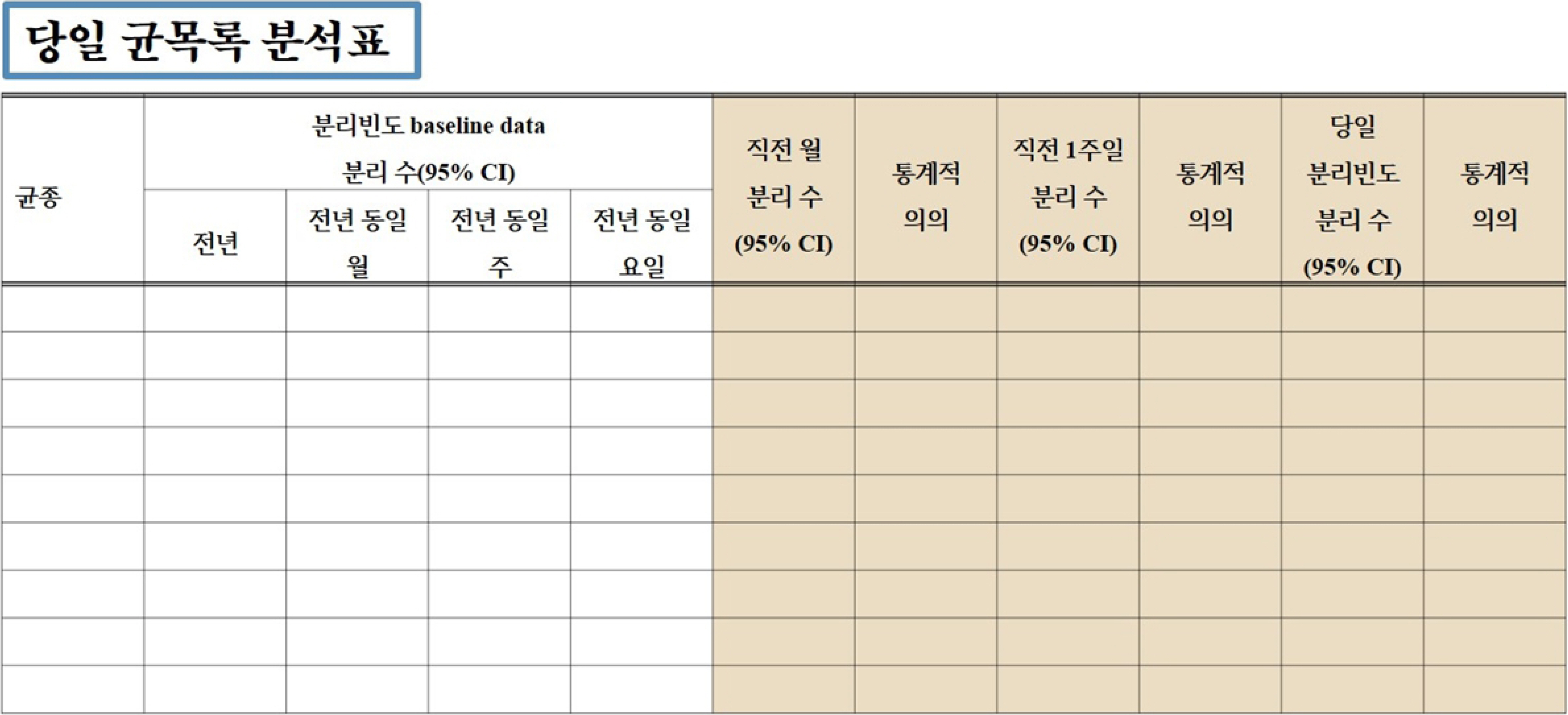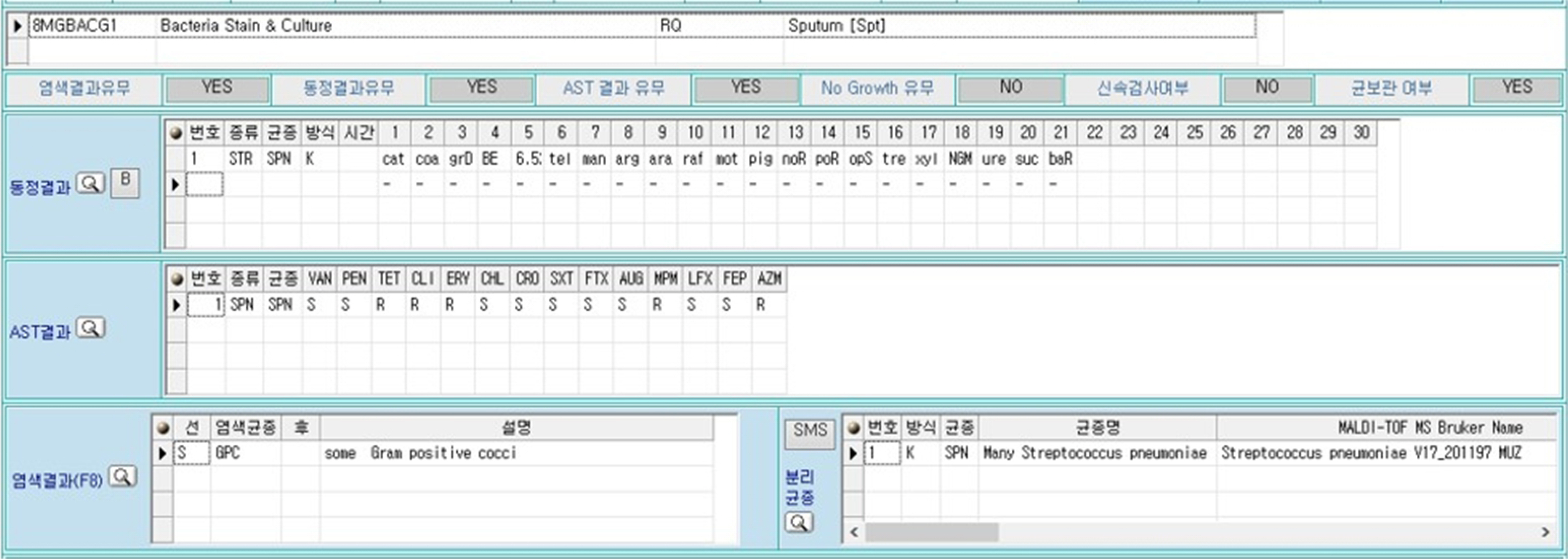Korean J healthc assoc Infect Control Prev.
2022 Dec;27(2):118-124. 10.14192/kjicp.2022.27.2.118.
Utilization of Automated Notification System of Epidemic Based on Clinical Microbiological Test Results
- Affiliations
-
- 1Department of Laboratory Medicine, Yonsei University Wonju College of Medicine, Wonju, Korea
- KMID: 2537072
- DOI: http://doi.org/10.14192/kjicp.2022.27.2.118
Abstract
- Clinical microbiological test results are fundamental in preventing of healthcare-related infections, but the test methods and interpretative criteria for antimicrobial susceptibility tests vary, depending on the period. Therefore, to effectively utilize the automated epidemic notification system based on the results of the clinical microbial test, it is necessary to build a test code system that can be expanded and allows the management of history to reflect changes in the clinical microbial tests. The level and scope of the establishment of the infection epidemic monitoring system depends on the characteristics of the medical institution, policy direction of the hospital decision-making management, details of the computer hardware, peripheral devices, and the software and personnel supporting it.
Keyword
Figure
Reference
-
1. Alliance for Human Research Protection. Unhealthy Hospitals: 103,000 preventable deaths in 2000. Chicago Tribune. AHRP. https://ahrp.org/unhealthy-hospitals-103000-preventable-deaths-in-2000-chicago-tribune/. Updated on 9 December 2022.2. Berenholtz SM, Pronovost PJ, Lipsett PA, Hobson D, Earsing K, Farley JE, et al. 2004; Eliminating catheter-related bloodstream infections in the intensive care unit. Crit Care Med. 32:2014–20. DOI: 10.1097/01.CCM.0000142399.70913.2F. PMID: 15483409.
Article3. Evans RS, Burke JP, Classen DC, Gardner RM, Menlove RL, Goodrich KM, et al. 1992; Computerized identification of patients at high risk for hospital-acquired infection. Am J Infect Control. 20:4–10. DOI: 10.1016/S0196-6553(05)80117-8. PMID: 1554148.
Article4. Glenister HM, Taylor LJ, Bartlett CL, Cooke EM, Sedgwick JA, Mackintosh CA. 1993; An evaluation of surveillance methods for detecting infections in hospital inpatients. J Hosp Infect. 23:229–42. DOI: 10.1016/0195-6701(93)90028-X. PMID: 8099097.
Article5. Louisiana Department of Health. NHSN overview. Infectious Disease Epidemiology 2017. https://ldh.la.gov/assets/oph/Center-PHCH/Center-CH/infectious-epi/HAI/HAIworkshop2017/handoutsD2/NHSNOverview_Final.pdf. Updated on 15 May 2022.6. Curtis SJ, Rathnayaka A, Wu F, Al Mamun A, Spiers C, Bingham G, et al. 2022; Feasibility of Bluetooth Low Energy wearable tags to quantify healthcare worker proximity networks and patient close contact: a pilot study. Infect Dis Health. 27:66–70. DOI: 10.1016/j.idh.2021.10.004. PMID: 34810151. PMCID: PMC8963530.
Article7. Ng GY, Ong BC. 2022; Contact tracing using real-time location system (RTLS): a simulation exercise in a tertiary hospital in Singapore. BMJ Open. 12:e057522. DOI: 10.1136/bmjopen-2021-057522. PMID: 36192104. PMCID: PMC9535253.
Article
- Full Text Links
- Actions
-
Cited
- CITED
-
- Close
- Share
- Similar articles
-
- An Automated Fast Healthcare InteroperabilityResources-Based 12-Lead Electrocardiogram MobileAlert System for Suspected Acute Coronary Syndrome
- Understanding of Dense Breast and Perception of Breast Cancer Risk of Nurses with or without Dense Breast Notification
- Syphilis Notification Systems in Korea over the Last 20 Years
- Current status of brain death organ donor’s management through introduction of electronic notification system of potential brain death donor
- Performance Evaluation of an Automated Microbiological Stainer, KS-S100








